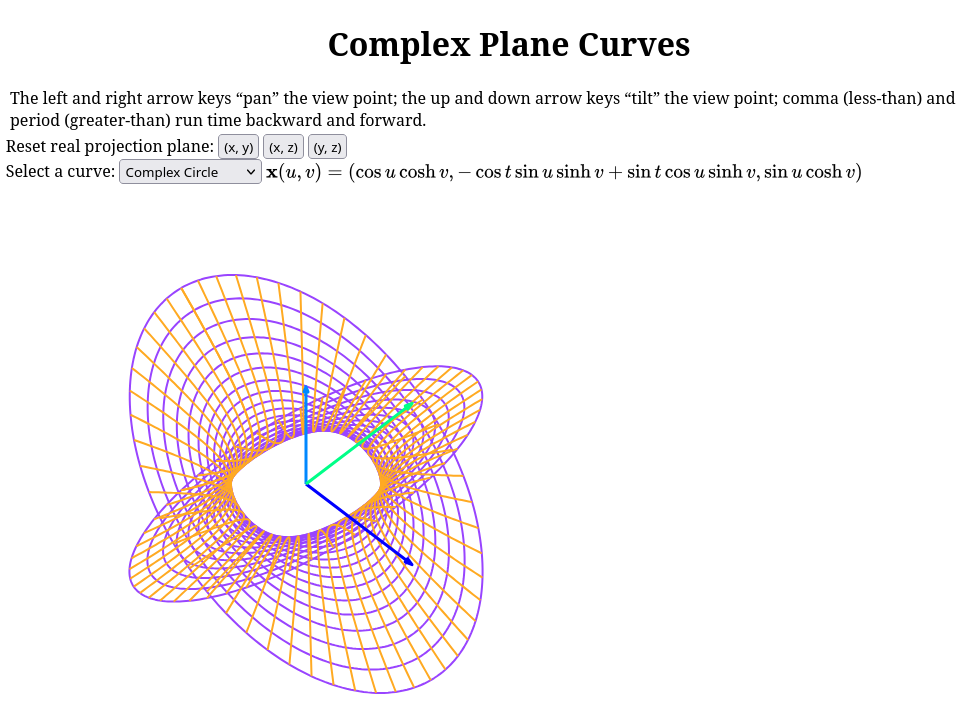As a geometrically-minded complex geometer, I am continually vexed by our low-dimensional universe and how it constrains visualization.
Different mathematicians have different ways of coping. When I was a student, strategies typically retained “essential” abstract structure, for some value of essential. For example, Complex Analysis by Lars Ahlfors depicts graphs of complex inverse functions as multiple copies of the complex plane, suitably slit and cross-joined. Each sheet retains enough structure to do complex analysis, while global topology is captured by the gluing. For another example, my advisor—whose books have a remarkable longevity, are deeply geometric without illustrations, and are often algebraically formidable—would draw a rectangle, a horizontal line underneath as long as the rectangle is wide, and a downward vertical arrow, while saying, Let \(P\) be a principal \(G\)-bundle over \(M\).
(Pause for laughter.)
As I have written at Cara, these circumstances were personally unsatisfying. The two museum-specimen viewers profiled here are one response. Other responses are wall art images I have created and written about, more aesthetic and formal portraits of visitors from \(4\)-space and \(6\)-space.
Instructions: Each program presents a real \(3\)-dimensional view of selected real surfaces. The up and down arrow keys pitch (tilt) the view; the left and right arrow keys yaw (pan) the view. The less-than and greater-than (comma and period) keys run some high-dimensional animation loop backward or forward. If the canvas is blank when the page loads, press an arrow key to initialize. This is my fault, not yours. The image is a screenshot. Please visit the links for the live programs.

Morph presents a choice of six specimens. These are the catenoid-helicoid transformation, a single rigid object in complex \(3\)-space (real \(6\)-space) whose orthogonal projection to real \(3\)-space under suitable rotation moves by local isometry (bending without stretching); the complex square root; the complex circle whose equation in complex rectangular coordinates \((z, w)\) is \(z^{2} + w^{2} = 1\); and three surfaces contained in the unit sphere in \(4\)-space seen under stereographic projection: an equatorial sphere, a product torus, and a twistor torus, namely the product torus with a tilted coordinate system whose coordinate curves are great circles.
Complex Plane Curves similarly presents seven specimens, two overlapping with Morph: the complex square root, in polar coordinates and rectangular; the cube root in polar coordinates; the cusp \(z^{2} = w^{3}\) in polar coordinates; the complex logarithm; the complex arcsine; and the complex unit circle. These links point to product pages for poster images. Each image is also available as a canvas print (\(0.75\) inches thick, up to \(20 \times 30\) inches), large canvas (\(1.25\) inches thick, up to \(40 \times 60\) inches), or framed poster.
Although \(3\)-dimensional space cannot fully accommodate even complex \(2\)-space, which has real dimension four, I hope you agree there are meaningful possibilities for visualization, and that these are not merely eye candy, but convey genuine mathematical insights.